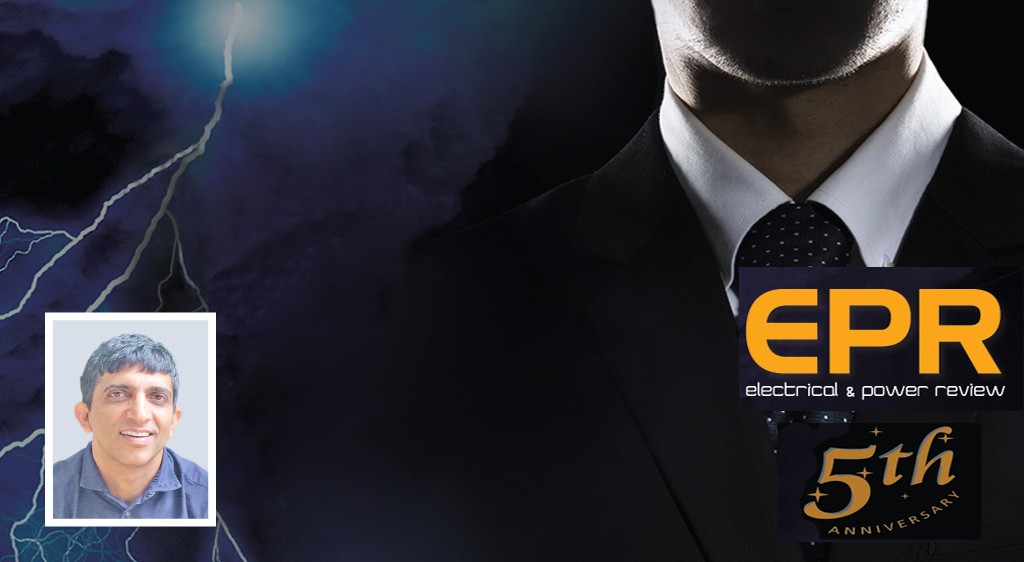UDAY made states accountable for their deeds
By EPR Magazine Editorial November 29, 2017 12:50 pm IST
By EPR Magazine Editorial November 29, 2017 12:50 pm IST

Rajeev Khushu, Director Corporate Affairs, Texas Instruments India
Power is a critical component of infrastructure and is crucial for the economic development of the country. With the rapid rise in the demand for electricity, the generating capacity needs to be doubled among conventional and non-conventional sources available. The strong focus by the Indian government on promoting renewable energy and implementation of projects within the timeframe has helped India rank 3rd among 40 countries in EY’s Renewable Energy Country Attractiveness Index.
The government’s focus on attaining ‘Power for all’ by 2019 includes preparation of state specific action plans, and implementation of Green Energy Corridor for transmission of renewable energy, and it has led to the increase in capacity addition in the country. This financial year the government successfully added 10.2 GW of conventional energy generation capacity and 12.5 GW of renewable energy capacity.
With the government’s ambitious target of setting up 175 GW of renewable power capacity by end 2022, India has already generated 10.2 billion units (BUs) of electricity in June from green energy sources which includes solar, wind, biomass and small hydro. Around 26 per cent more than 8.1 BUs of renewable energy generated in the same month last year as per research and ratings agency India Ratings. In the beginning of the current financial (2017-18), the country’s power generation from renewable sources showed an increase of 27 per cent as compared to corresponding period a year ago. The government has also made the availability of coal seamless and this has ensured that consumption more or less matches generation. Many solar generation plants are being installed which will make India the world’s third largest solar market from next year, after China and the US. While these measures are moves in the right direction, what is also required is steady economic growth, especially industrial growth, so as to ensure that the additional power being generated is absorbed by large customers, informs Rajeev Khushu, Director Corporate Affairs, Texas Instruments India.
Accountable for deeds
Talking on what would be the game changer, Khushu says, “Three years back, one of the major challenges that the government faced was the looming debt of inefficient discoms, who were struggling with payment defaults and ever rising ATC losses. Ujwal Discom Assurance Yojana (UDAY), the turnaround scheme by the government aimed at improving operational and bill collection efficiency. UDAY for the first time made states accountable for their deeds. Power utilities in some states have managed to cut down their losses significantly with the help of UDAY. Utilities in Rajasthan, for example, reduced losses by 54 per cent in 2016-17 to Rs 5,208 crore from a year ago. Those in Tamil Nadu lowered losses by 35 per cent to Rs 3,783 crore in the same period, while those in Uttar Pradesh cut losses by 14 per cent to Rs 6,619 crore. The reduction in losses could be made possible by increased bill payment compliance by consumers, reduction in power theft and tight monitoring of the utilities’ operations by state governments which took over three-fourths of their accumulated debt under UDAY scheme.”
Major changes observed as far as improving the health of the industry is concerned
Several landmark decisions have been taken in thermal power generation, hydel and more importantly in solar, wind and other green energy, besides strengthening of transmission and distribution, separation of feeder and metering of power to consumers. “The industry is not only seeing achievements in terms of capacity addition but also increase in energy efficiency with the present infrastructure and reducing power losses,” states Khushu.
Khushu lists a few of the power accelerators, which will bring positive results to industry, are as follows:
TI’s performance during past one year
According to Khushu, demand for TI’s product continues to grow stronger in both the automotive and industrial markets which are focused on end segments such as grid infrastructure, power delivery and lighting solutions. TI offers differentiated analog and embedded processing semiconductor products for energy efficiency and power distribution and monitoring. This year, the company has recorded robust growth in revenues from our core businesses of analog and embedded processing, informs Khushu.
Investing heavily in R&D
As the industry is all set for a massive rebound, Khushu informs about the innovative strategies to remain competitive. He says, “TI has the industry’s broadest portfolio of differentiated analog and embedded processing chips. With leadership positions in most analog categories, we have more differentiated parts to meet our customers’ needs than any of our competitors. We invest heavily in R&D to drive innovation and ensure quality – both of which help us retain our competitive advantage.”
We use cookies to personalize your experience. By continuing to visit this website you agree to our Terms & Conditions, Privacy Policy and Cookie Policy.